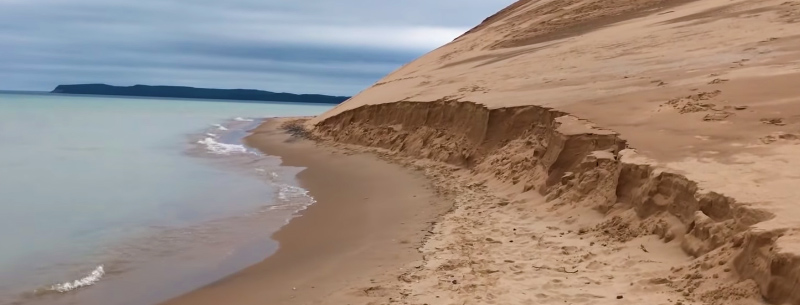Michigan Hiking Adventure
I was hiking “mountains of sand” in Michigan, in the Sleeping Bear Dunes National Lakeshore Park. It was March, not the busiest time for going to the lake in Michigan, so when I made it through the woods and over the dunes, I would have miles of beach to myself. It was just an over-nighter, a chance to test some new hiking and ultralight backpacking equipment. I went up and down the wooded hills quickly, enjoying the cold air.
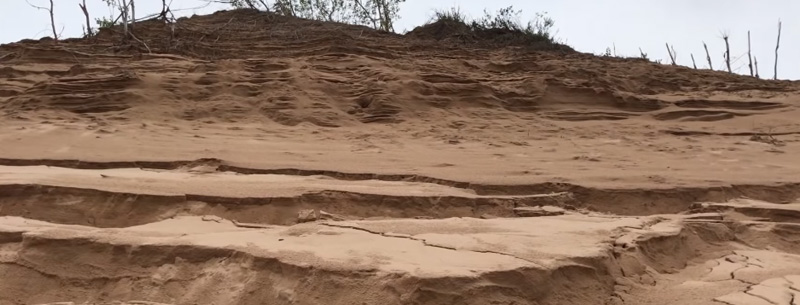
On my first break, halfway through the forest, I cooked noodles. The cheap 3-ounce pot was from Walmart or the dollar store, and it worked fine. I was happy with this discovery. From the catalog descriptions, the expensive titanium pots all seem to be heavier, probably because they are too thick and with too many gadgets.
I did have to use a small twig-fire when my homemade alcohol stove didn’t provide enough heat. I later learned that isopropyl alcohol doesn’t burn as hot as the alcohol used as a gas additive. The twigs worked okay though.
Hiking On The Beach
After lunch, I hiked to Lake Michigan. I sat high up on a large sand dune and watched the waves push ice up onto the empty beach. Coyotes began to howl somewhere in the distance, and the clouds rolled in. I was searching the beach for Petoskey stones when the snow began. Hiking in Michigan in March has its risks-and its rewards.
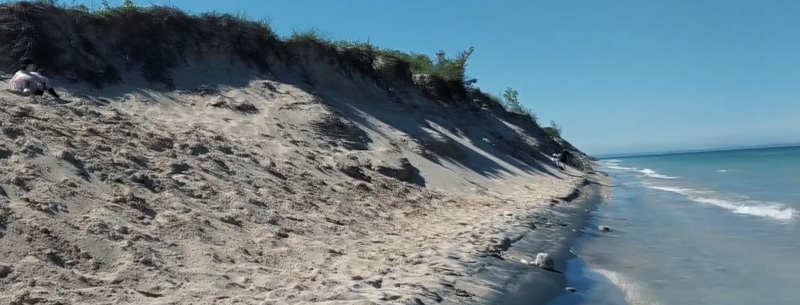
I was hiking in running shoes, and it would be well below freezing that night. In northern Michigan, March is definitely part of winter. My feet stayed warm while I was hiking, but I hadn’t counted on them getting wet. Fortunately, I had a pair of warm, dry socks for sleeping.
Testing Ultralight Hiking Equipment
It was the first time I had used my GoLite Breeze backpack, which weighed only 13 ounces. I was hiking with only about nine pounds on my back, and that only because I threw in some canned food. I was going light, but I was in Michigan, where I knew the forests and felt comfortable with my abilities.
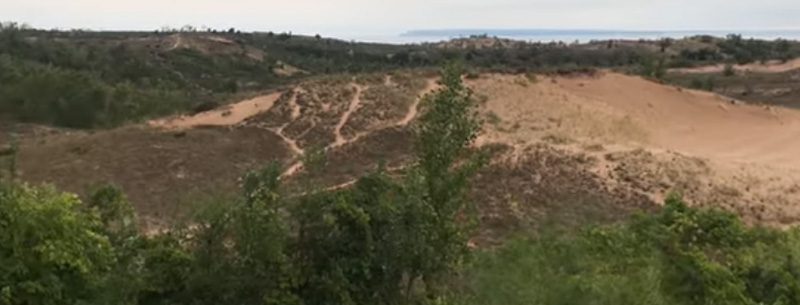
My down sleeping bag was a 17-ounce Western Mountaineering HighLite. It was the first time I would use it when the temperature was below freezing (It hit 25 degrees Fahrenheit that night). Fortunately, it wasn’t too windy.
Hiking up to the edge of the forest, behind the dunes, I found a good location and set up my small tarp. I piled up pine needles and dead bracken ferns under it, finishing just as it became dark. This made a warm mattress, and I slept well that night, listening to the coyotes, and to the waves pushing the ice around in Lake Michigan.
In the morning I was warm and happy to see that there was only a dusting of snow. My one-pound sleeping bag had kept me warmer than my three-pounder used to (and I thought that was light). I poured a little alcohol in the cut-off bottom of a Pepsi can (my 1/2-ounce backpacking stove) and heated up some tea. After a breakfast of crackers, I was soon hiking in my mostly-dry shoes, along the Lake Michigan shoreline.
Hiking Lessons Learned
Later that day I ended my trip with a hike to the village of Empire, six or seven miles away. I was satisfied with what I had learned. Only my cheap tarp, and cheap stove fuel, had disappointed me. The tarp was too small, and the alcohol was the wrong type.
After hiking in Michigan for years, I know it well. I know where to find dead grass and bracken ferns, for example, which can be used to make a warm mattress in a few minutes. Knowledge, obviously, can be as helpful as expensive gear.
Note: Backcountry.com has great tarps and ultralight sleeping bags. They also carry GoLite backpacks (My 13-ounce “Breeze” is what I used on this trip, and it has always served me well).
Places To Go Hiking In Michigan
The hiking trip described above was in the Sleeping Bear Dunes National Lakeshore, which contains a 35-mile stretch of Lake Michigan shoreline. It is known for the dunes, of course, which are up to 400 feet high, but it also has many beautiful hiking trails. Most of them are for day hiking, but there are a couple of places to backpack as well.
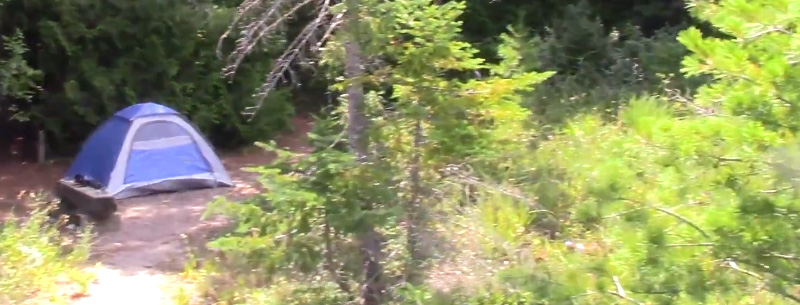
North and South Manitou Islands have some of the best hiking and backpacking if you like solitude. The ferry from Leland visits the islands once daily. There are no permanent residents on either island any longer, but you can still explore old houses and the ruins of communities where loggers and their families once lived. For more information, use the link here to visit the official Sleeping Bear Dunes National Lakeshore Web Site.
Mountain Hiking In Michigan
Porcupine Mountains Wilderness State Park is about 15 miles west of Ontonagon in Michigan’s Upper Peninsula. The park’s 60,000 acres are one of the few remaining large wilderness areas in the Midwest. Towering virgin timber, secluded lakes, and miles of wild rivers and streams make a visit to the “Porkies” a trip to remember.
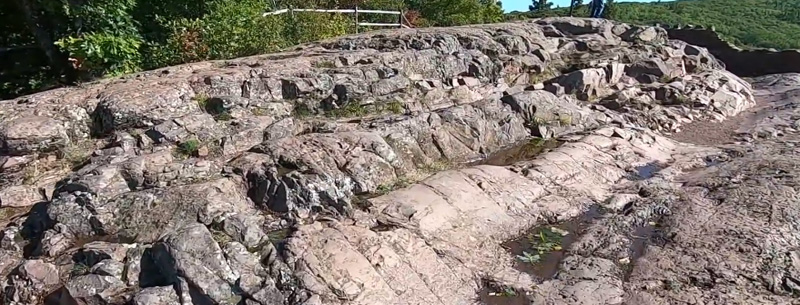
This is as close as you get to “mountain hiking” in Michigan. The mountains are not large, but the area is remote and beautiful. Day hiking can bring you to some of the secluded lakes and streams, such as Lake -Of-The-Clouds. Be careful with your food if you are backpacking here, as the park is full of black bears. For more information, try the Michigan State Parks Web Site, and www.PorcupineMountains.com.
